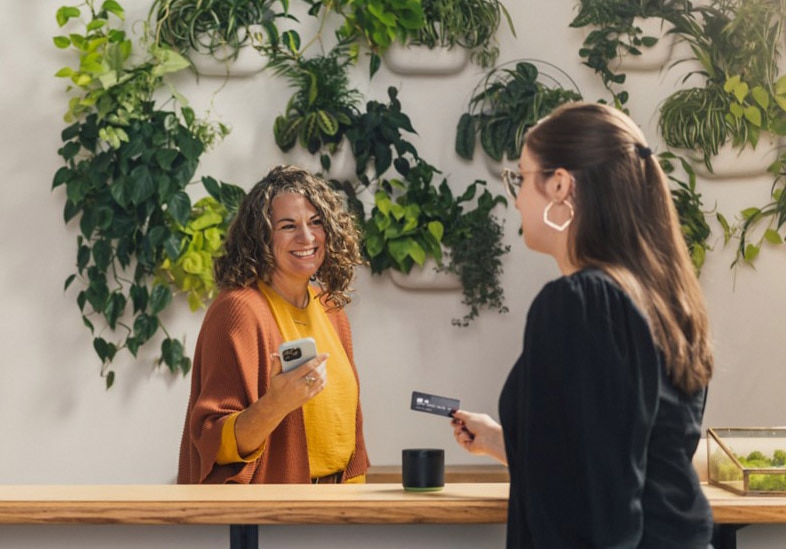Enhanced security
Contactless payments use cutting-edge technology to make every transaction more secure. From EMV chips that generate unique, one-time transaction codes for every purchase to robust encryption protocols, your customer's information remains safe the whole time.
Some of the most beneficial security features of contactless payments include:
- Unique transaction codes: Each tap generates a new, one-time code, making intercepted data useless for fraud.
- Tokenization: Replaces sensitive card details with a meaningless, unique digital token during transactions.
- Data encryption: Protects all information transmitted between the device and the payment terminal.
- Biometric authentication: Mobile wallets often require Face ID or fingerprint scans for transaction approval.
- Short-range: Requires devices to be very close, minimizing data interception risk.
More efficient operations
Contactless payments dramatically improve your business's operational efficiency, benefiting both your team and your customers. They drastically reduce checkout times—when transactions complete in mere seconds, your business can process more customers quickly, especially during peak hours, and effectively manage queues.
Imagine a busy coffee shop during the morning rush. Customers tapping their phones or cards could complete payments almost instantly, keeping the line moving swiftly and serving more people in less time.
Convenience
Contactless payments offer significant convenience for your business by streamlining the checkout process. This means your customers won't have to fumble through their bags or wallets looking for a card, which often leads to impatient customers and longer lines.
When you consider the collective time wasted by customers searching for cards—while you watch—it can significantly slow down your operations. By offering contactless options, you can help keep lines moving and improve overall customer satisfaction.
Health and safety
Minimizing physical contact remains a general health consideration in any public interaction. Contactless payments significantly reduce hygiene-related risks often associated with handling physical cash or inserting cards into shared terminals.
Customers can simply tap their card or mobile device, eliminating the need to directly touch a communal payment pad or exchange items with a cashier. This "touch-free" approach is a simple yet effective measure for maintaining a more hygienic environment for both customers and staff.
Higher revenue potential
The frictionless nature of contactless payments can also directly contribute to a higher revenue potential for your business. When customers can complete transactions easily, they are more likely to make impulse purchases, as the payment process feels less like a hurdle and more like a natural extension of their shopping experience.
Overall, contactless technology has made payment quicker, safer, and more convenient.














 Apple Pay users in the United States reached
Apple Pay users in the United States reached 



